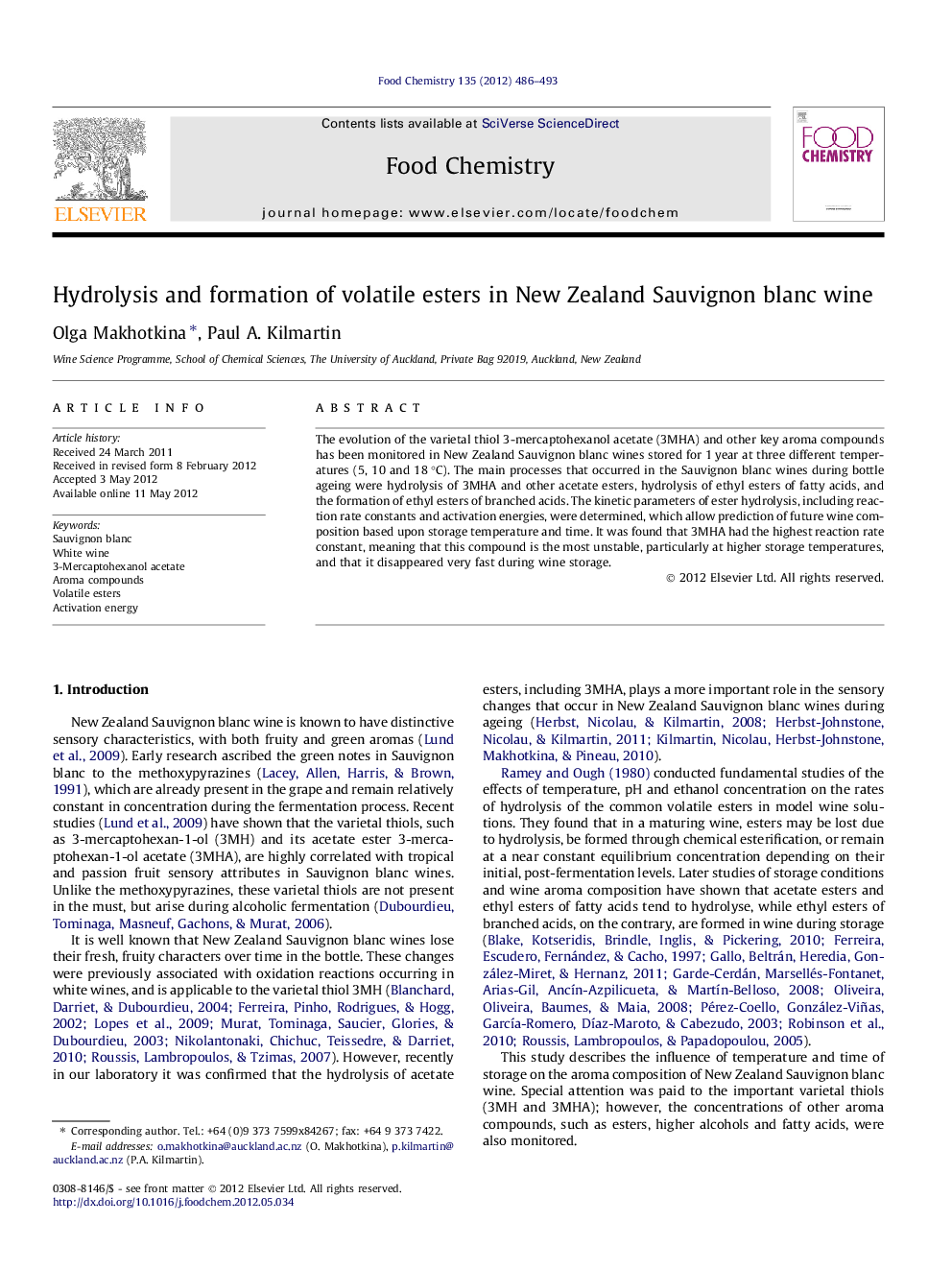| Article ID | Journal | Published Year | Pages | File Type |
|---|---|---|---|---|
| 1185762 | Food Chemistry | 2012 | 8 Pages |
The evolution of the varietal thiol 3-mercaptohexanol acetate (3MHA) and other key aroma compounds has been monitored in New Zealand Sauvignon blanc wines stored for 1 year at three different temperatures (5, 10 and 18 °C). The main processes that occurred in the Sauvignon blanc wines during bottle ageing were hydrolysis of 3MHA and other acetate esters, hydrolysis of ethyl esters of fatty acids, and the formation of ethyl esters of branched acids. The kinetic parameters of ester hydrolysis, including reaction rate constants and activation energies, were determined, which allow prediction of future wine composition based upon storage temperature and time. It was found that 3MHA had the highest reaction rate constant, meaning that this compound is the most unstable, particularly at higher storage temperatures, and that it disappeared very fast during wine storage.
► Volatile compounds change greatly during storage of New Zealand Sauvignon blanc wine. ► 3-Mercaptohexanol acetate and other acetate esters hydrolyse during wine storage. ► The concentrations of ethyl esters of fatty acids also decrease with time. ► The concentrations of ethyl esters of branched acids increase during wine storage. ► Reaction rate constants and activation energies for ester hydrolysis were evaluated.
